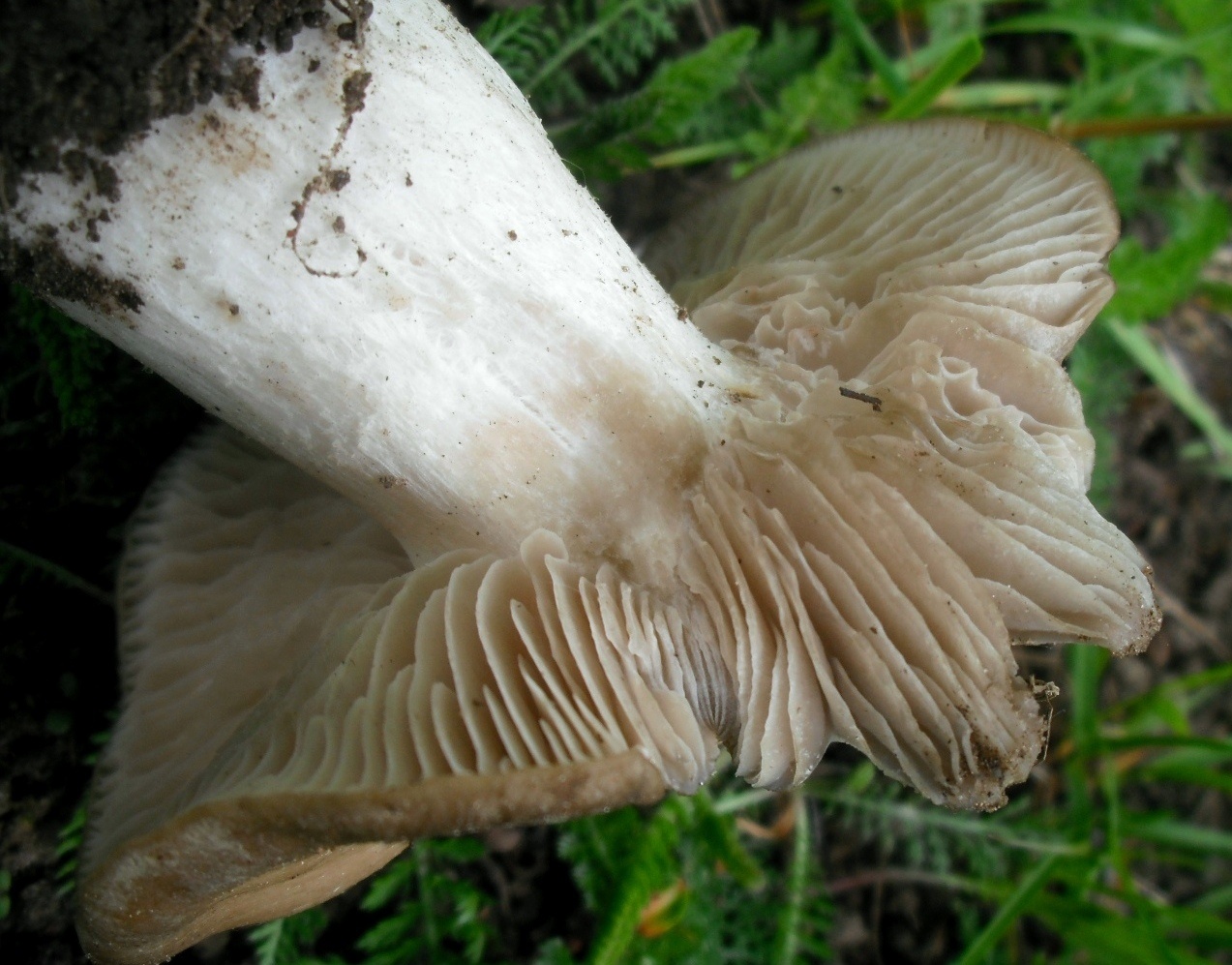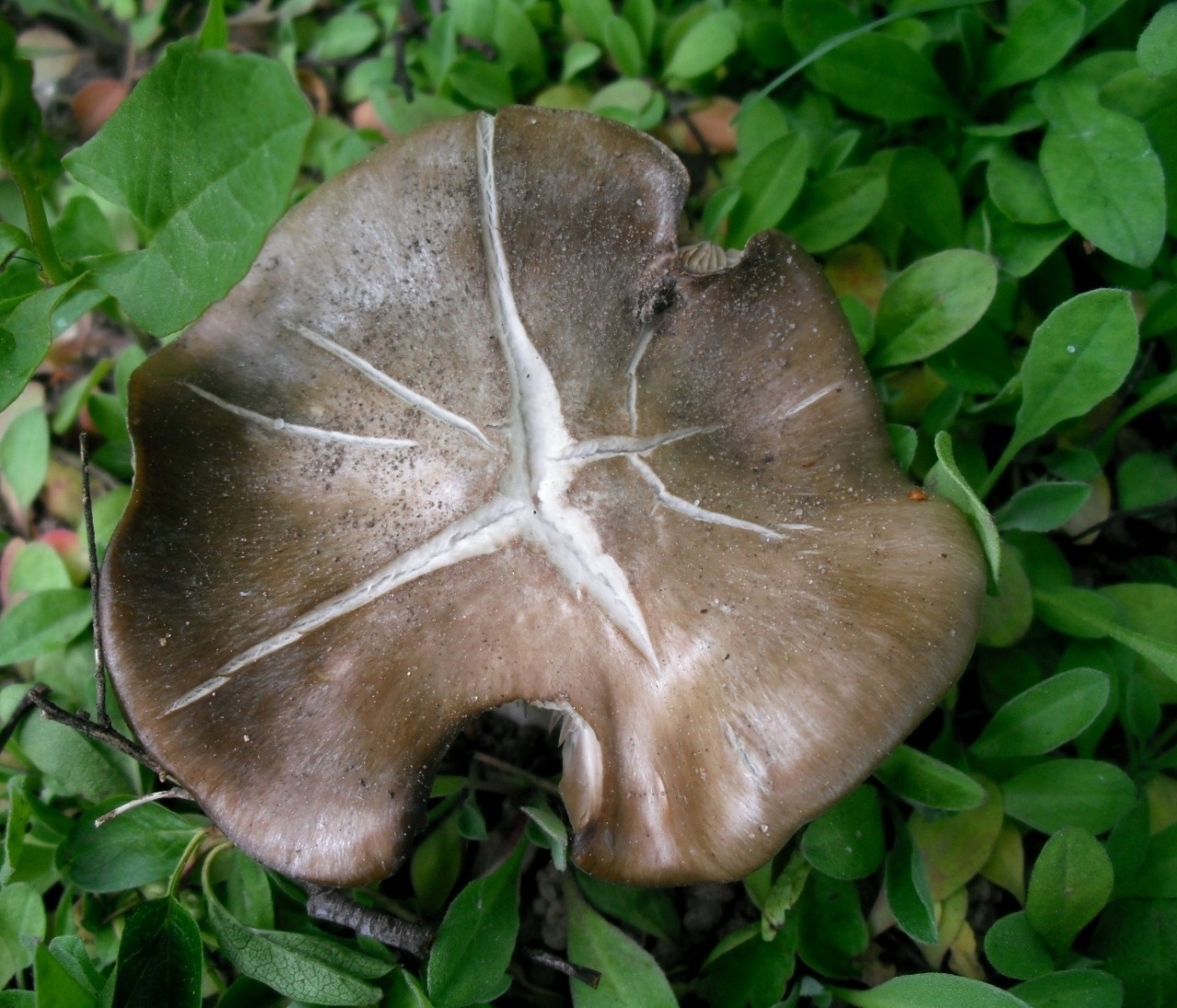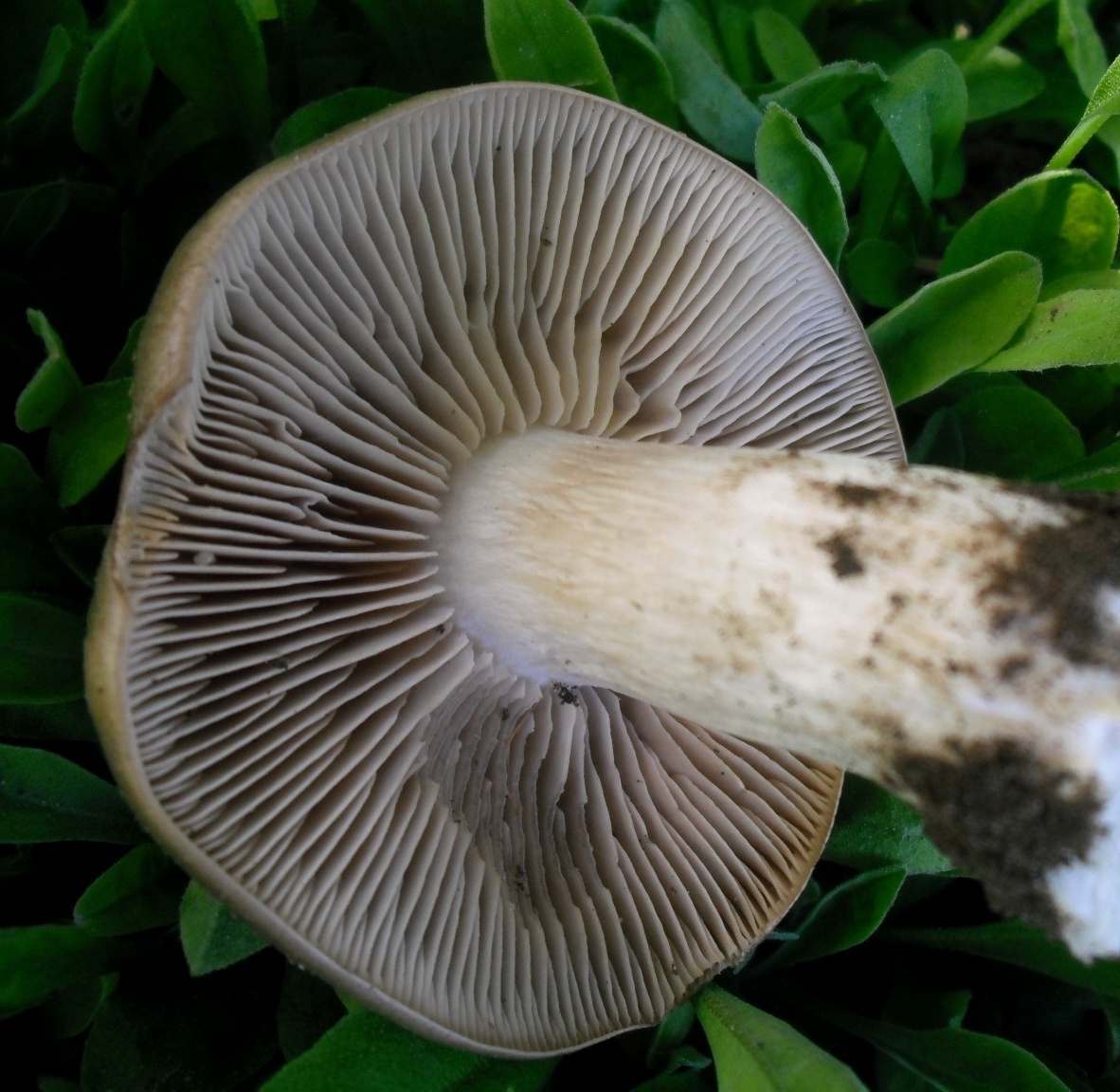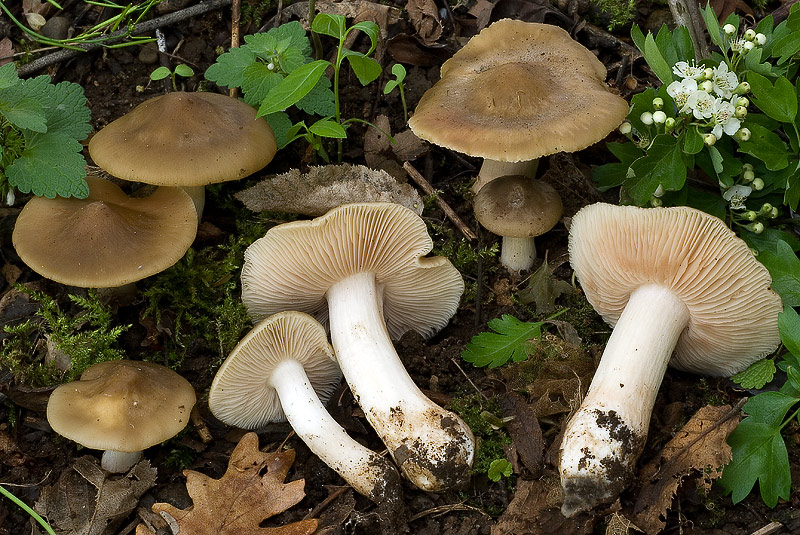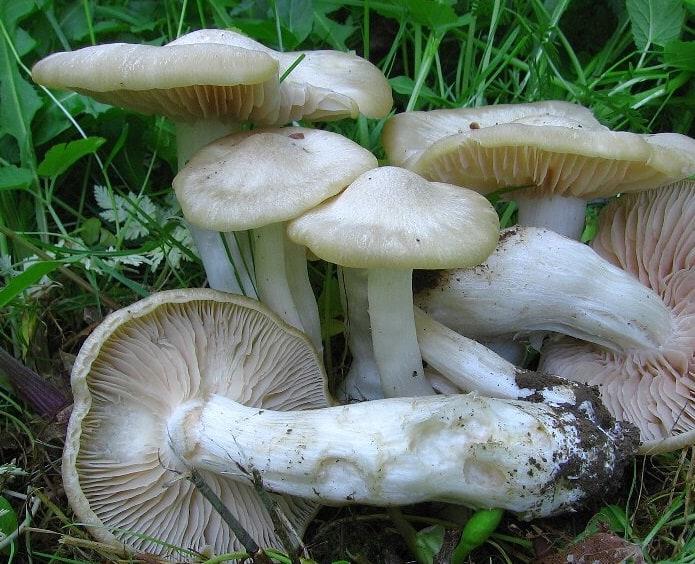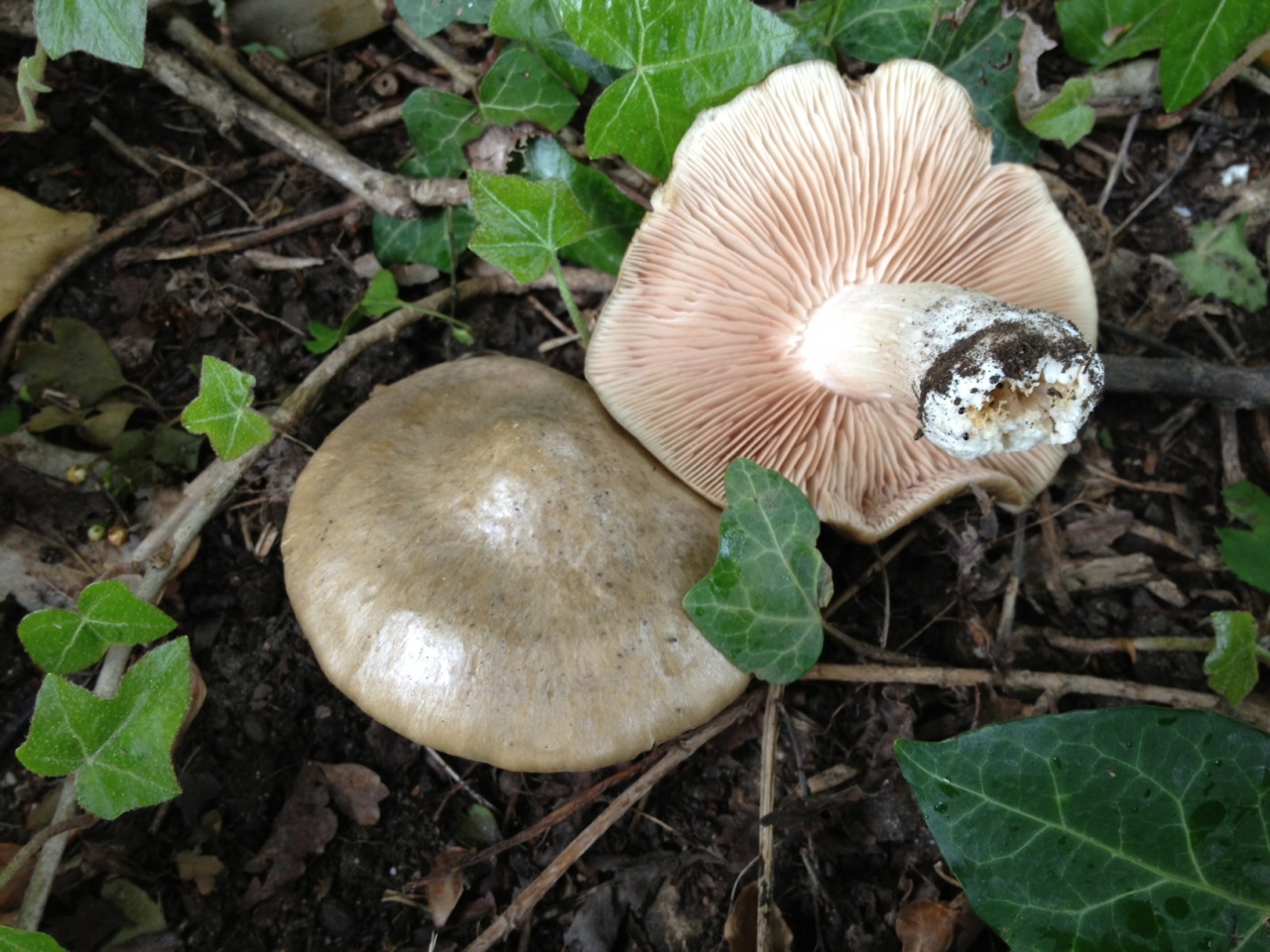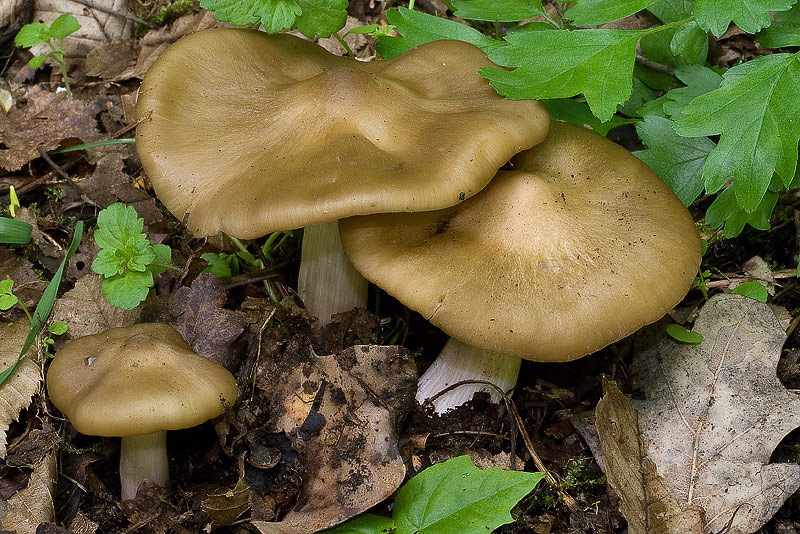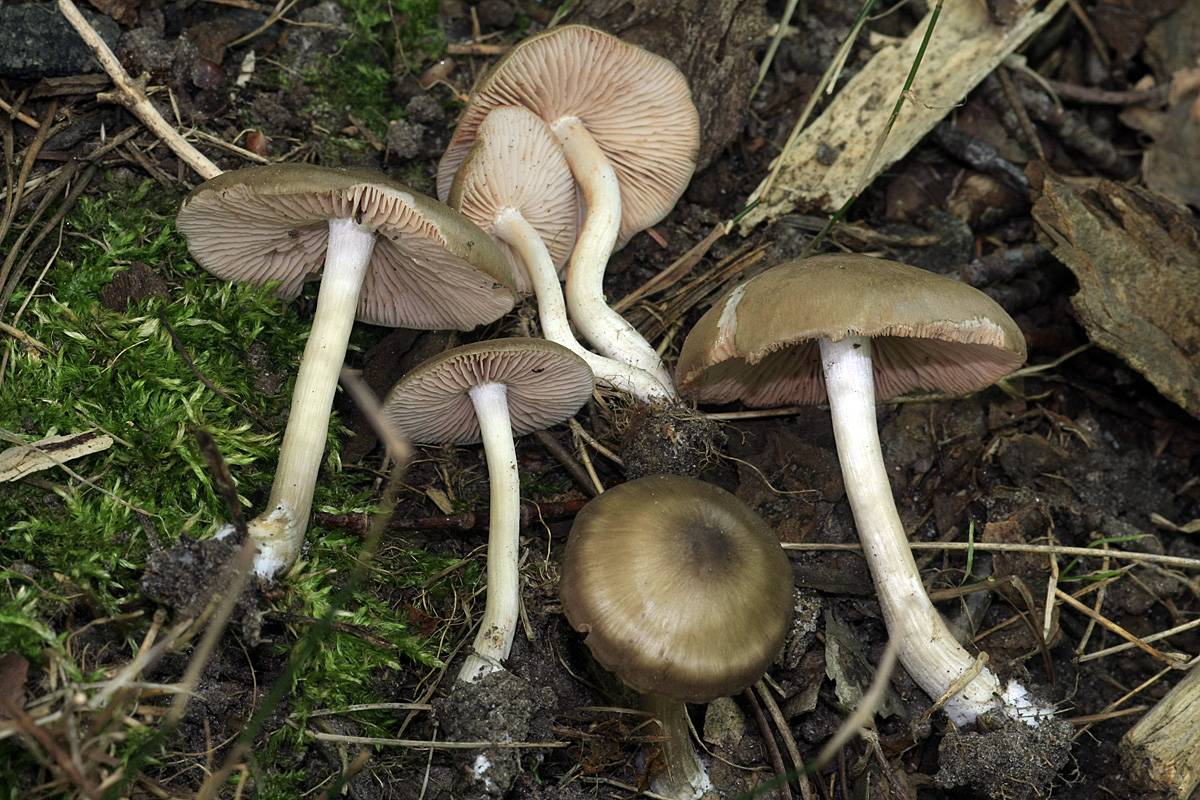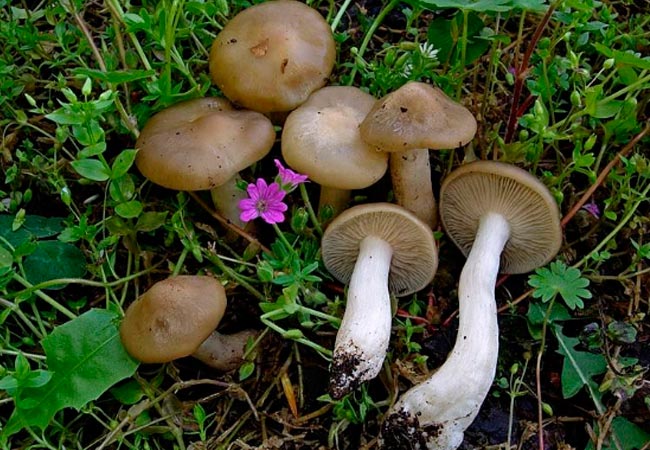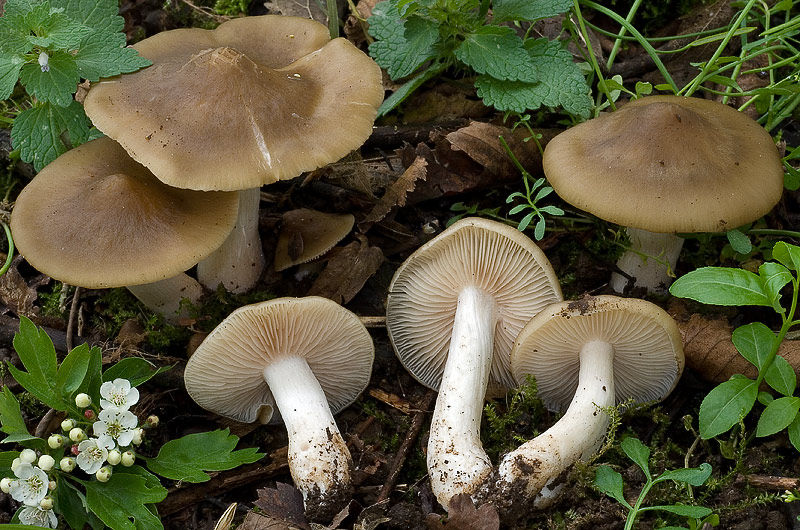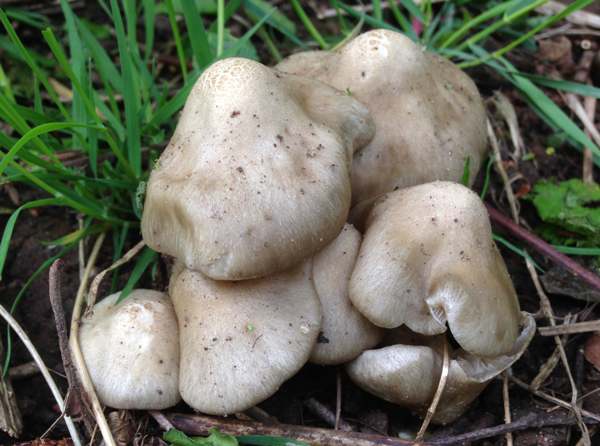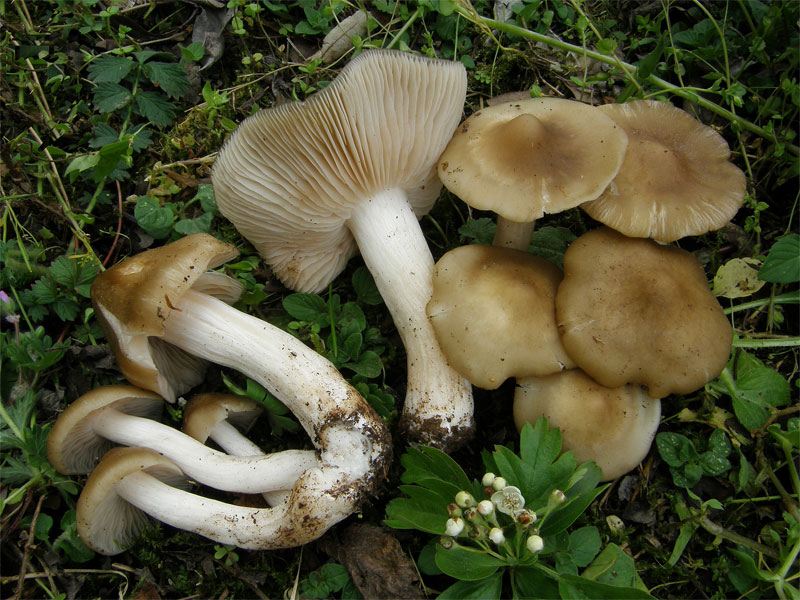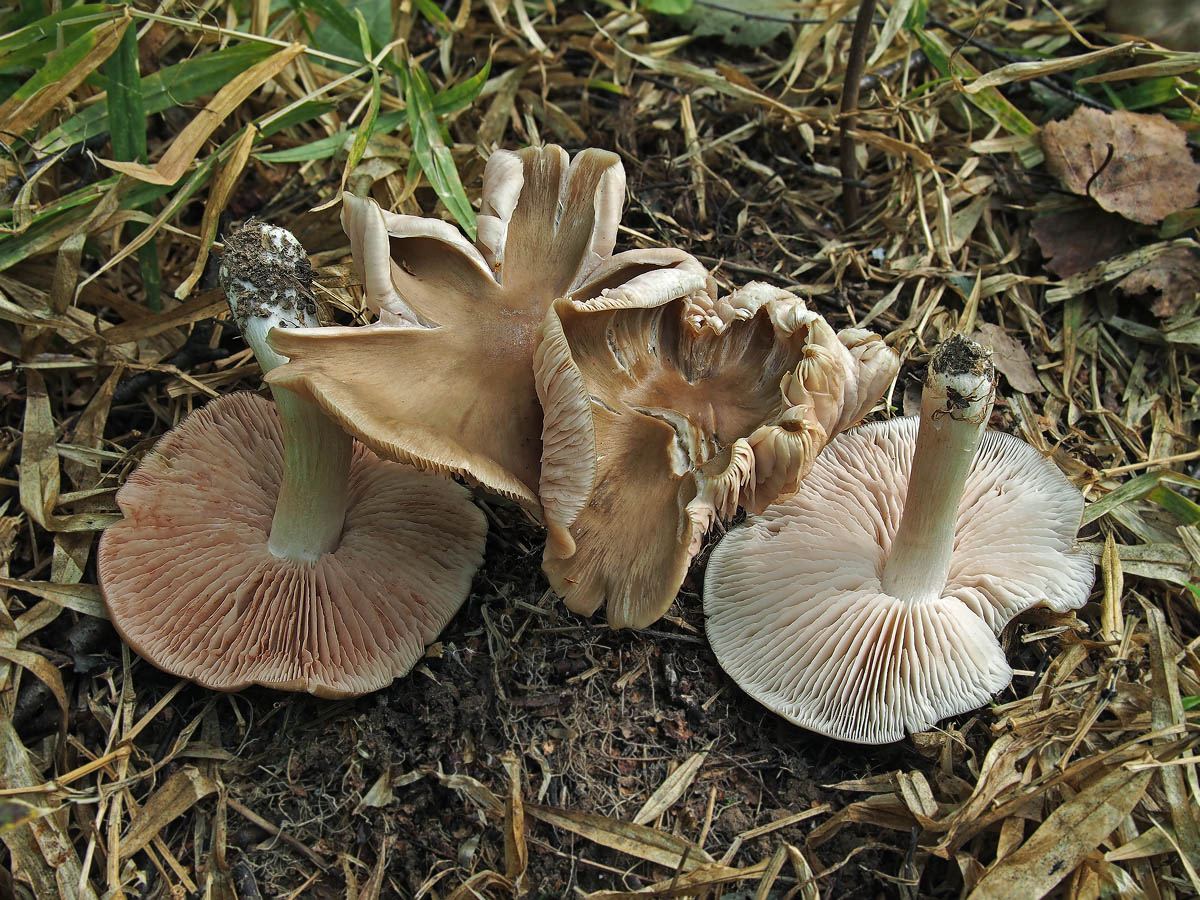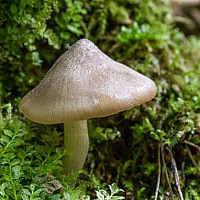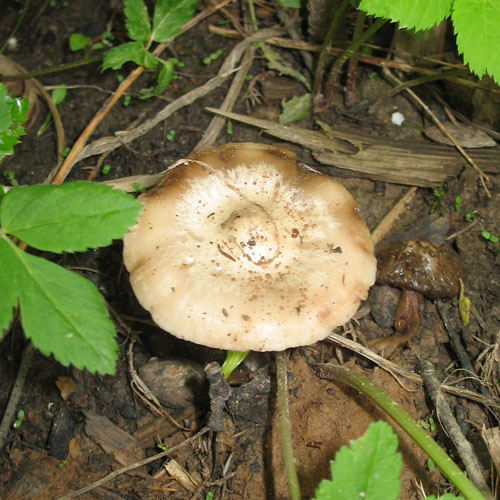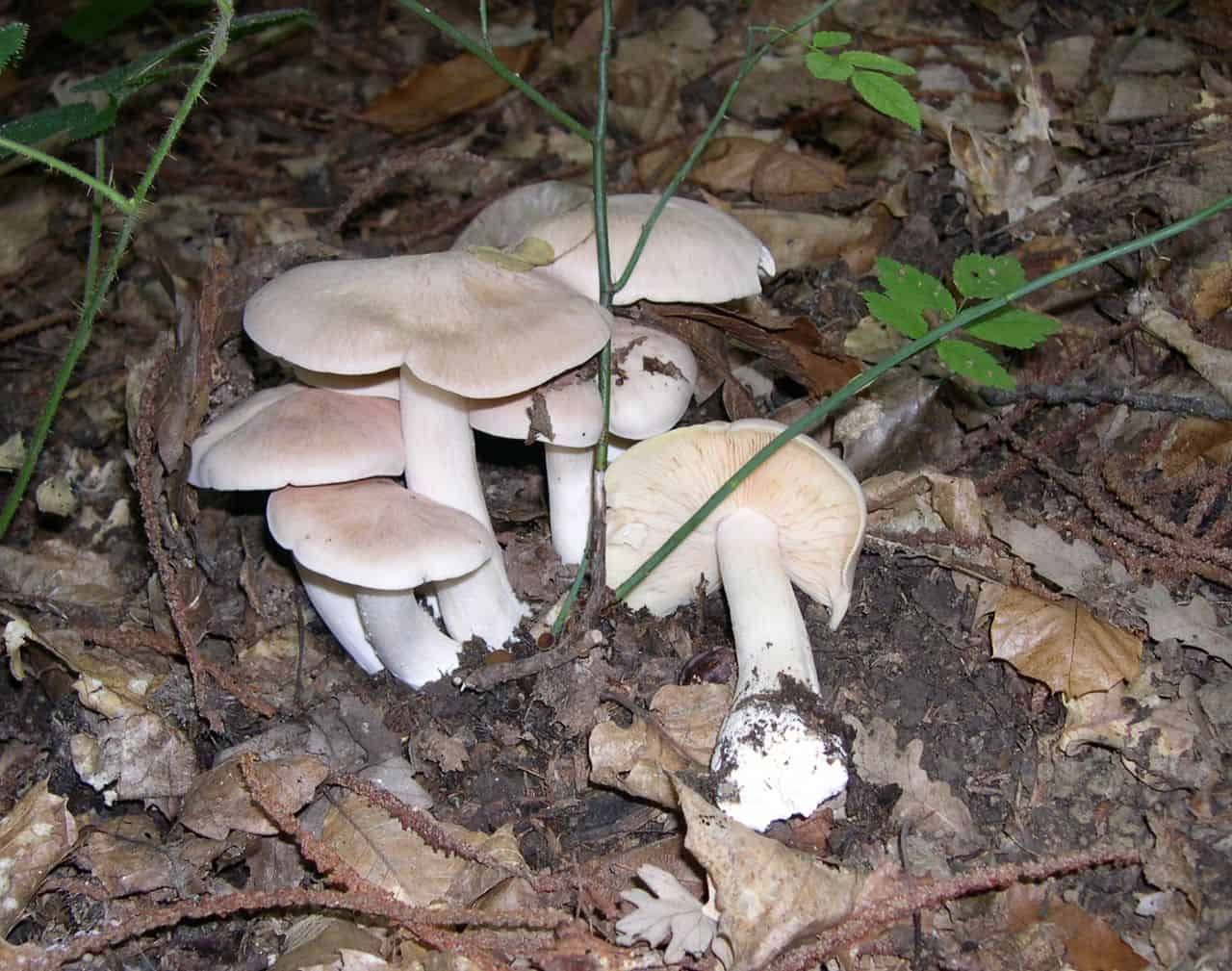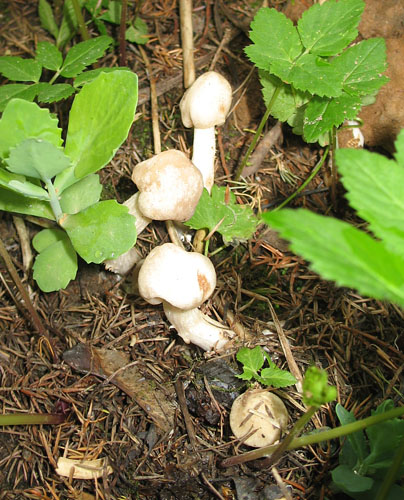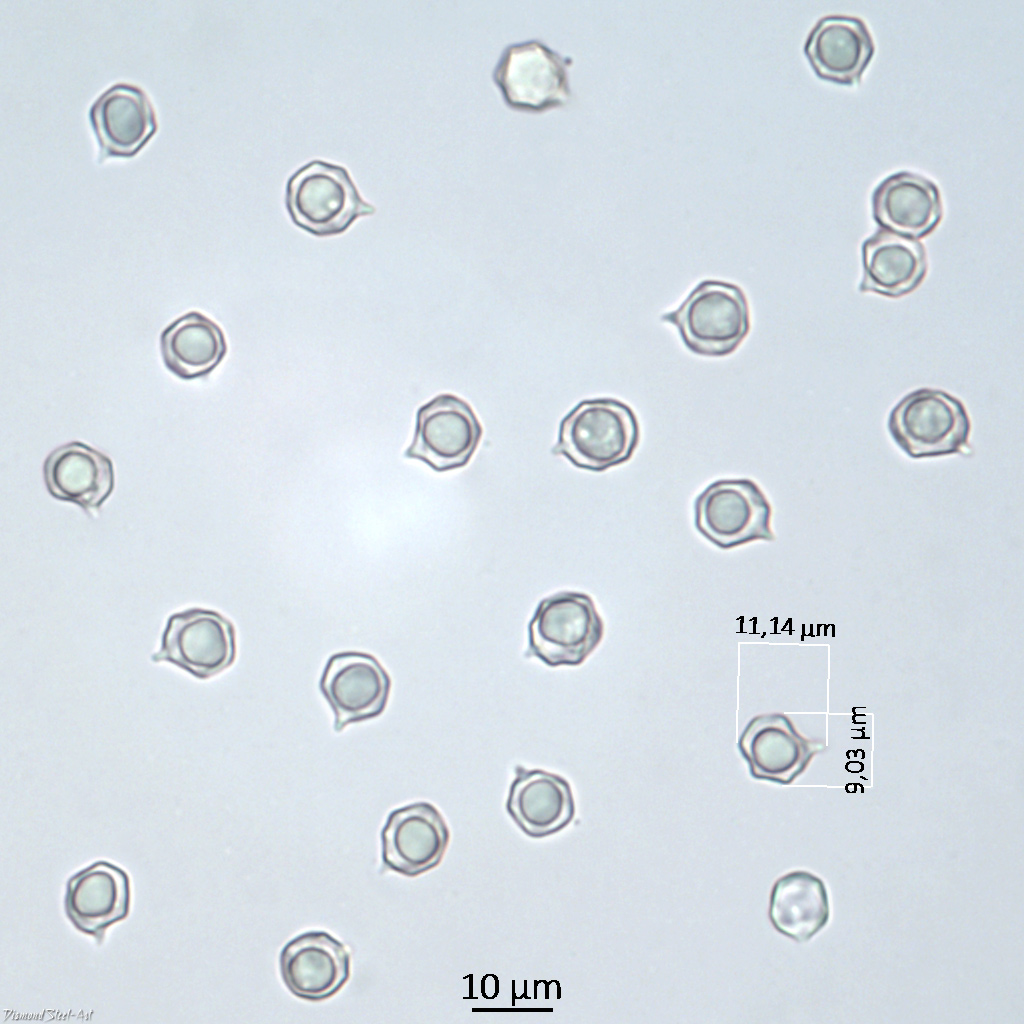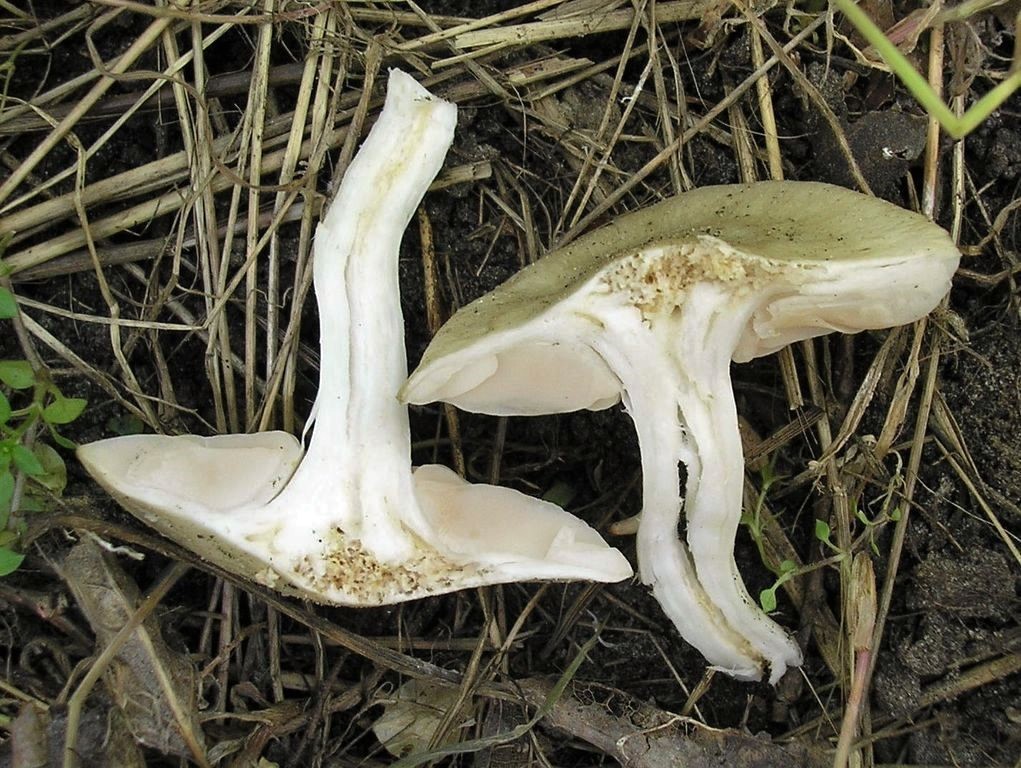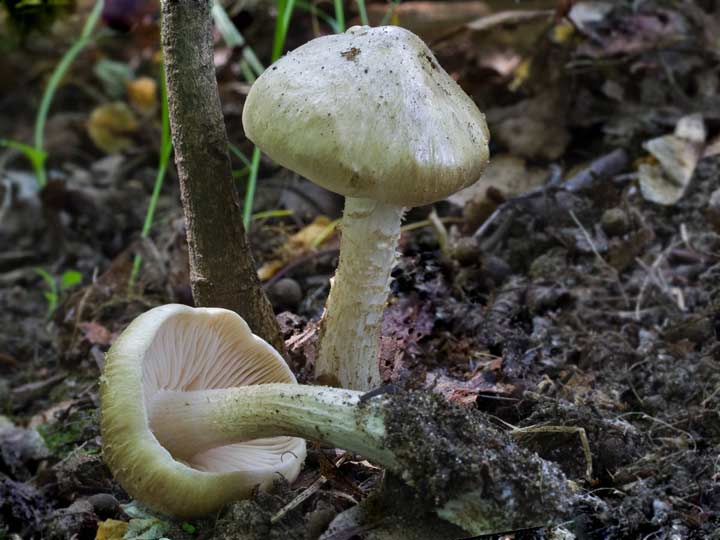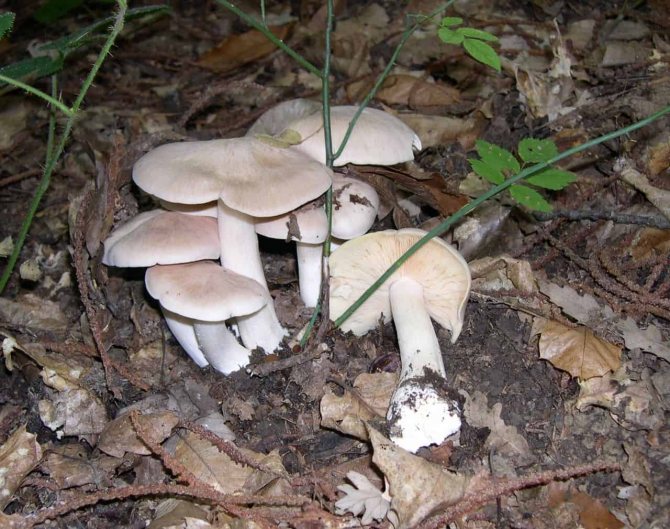Primary processing and preparation
Garden entoloma is conditionally edible. The collected fruit bodies are completely freed from forest litter and either dried or washed well, then boiled for 20 minutes. The broth is drained, and the prepared mushrooms are fried, salted and pickled. In Western Europe, such dishes are particularly popular.
In order to collect and safely prepare a garden entholoma, it is necessary to confidently distinguish it from similar poisonous relatives, especially from the most dangerous twin - tin entoloma. Before culinary use, the harvested mushroom crop must be boiled.
| Group: | Lamellar |
|---|---|
| Plates: | Pinkish |
| Colour: | Brown, beige, gray shades |
| Info: | Bump in the center of the cap |
| Department: | Basidiomycota (Basidiomycetes) |
|---|---|
| Subdivision: | Agaricomycotina (Agaricomycetes) |
| Class: | Agaricomycetes (Agaricomycetes) |
| Subclass: | Agaricomycetidae |
| Order: | Agaricales (Agaric or Lamellar) |
| Family: | Entolomataceae (Entolomaceae) |
| Genus: | Entoloma |
| View: | Entoloma clypeatum (Entoloma garden) |
Areas of growth of garden entholm.
Garden entoloms are found in mixed and deciduous forests. They grow under birches, mountain ash and oak trees. They prefer to settle on nutrient rich soil. Mushroom pickers find garden entolomes in meadows, along roads, in gardens, on lawns. In the garden, they grow under fruit trees, mainly pears and apple trees, as well as under rose hips, blackthorns, hawthorns, and rose bushes.
On the territory of the Leningrad Region, garden entolomas are common mushrooms, but they grow pointwise. Fruiting from May to late July, and the peak is observed in June. Often fruiting occurs not in one, but in several short layers. Usually they grow in groups, often the groups can be quite large, and rarely come across alone.
Garden entolomes are widespread in the world; they grow in Western Europe, North America, the European part of Russia and Ukraine. In warm regions, their fruiting begins in April.
Double entoloma garden.
The pale brown entoloma is very similar in appearance to the garden entoloma. This is also an edible mushroom. Its color is cream, brownish-greenish or brownish-gray. Descending plates. The leg is long, shiny, white. The pale brown entoloma also grows in gardens, on lawns, among thickets of bushes. Fruiting from May to June.
Both species are edible, the main thing is not to confuse them with poisonous or tin entola. The main difference between a poisonous entoloma is its large size (its cap can be about 20 centimeters in diameter), an easily removable skin, a yellowish color of the plates, a thick club-shaped leg, of the same color with a cap, and an unpleasant smell of pulp (but sometimes the smell is almost imperceptible). Another feature of poisonous enthol is that they are not found in the north.
There are also two relatively similar venomous species. Squeezed entoloma has a thin brown or creamy yellow cap, and its flesh emits an ammonia smell. Entoloma squeezed from August to October bears fruit. And the second species is the spring entoloma, which has a darker color, slender and small. This species bears fruit from April to May.
Evaluation of the edibility of garden entoloma.
This mushroom is conditionally edible. Garden entolomy should be boiled for 20 minutes, and only then fry, pickle or salt. In the southern parts of Russia, dishes from garden entholm are very rare, but in Western Europe these mushrooms are considered one of the best.
Categories
- Avocado
- Oranges
- Watermelon
- Banana
- Barberry
- Porcini mushroom dishes
- Oyster mushroom dishes
- Mushroom dishes
- Milk dishes
- Umbrella Dishes
- Chanterelle dishes
- Honey mushroom dishes
- Camelina dishes
- Champignon dishes
- Hawthorn
- Cowberry
- Grape
- Growing
- Hallucinogenic
- Blueberry
- Grapefruit
- Mushroom places
- Mushroom soups
- Mushrooms for the winter
- Other
- Melon
- Hedgehog
- Frying
- Honeysuckle
- Blank
- Freezing mushrooms
- Salting
- Fig
- Irga
- Dogwood
- Strawberry
- Cranberry
- Gooseberry
- Kumquat
- Lemon
- Raspberries
- Mango
- Tangerines
- Passion fruit
- Pickling
- Local berries
- Cloudberry
- Inedible mushrooms
- Sea buckthorn
- Return
- Mushroom poisoning
- Pitahaya
- Pizza with mushrooms
- Salads
- Currant
- Currant
- Mushroom Picker Handbook
- Drying
- Edible mushrooms
- Conditionally edible
- Fruits
- Blueberry
- Rose hip
- Exotic berries
- Berries
- Poisonous
Description of poisonous entoloma
Entoloma venomous is the largest member of the genus. The diameter of its cap is most often 5-17 centimeters, but can reach 25 centimeters. The color of the cap in young specimens ranges from grayish-ocher to off-white; with age, the color becomes ash or gray-brown. The cap is smooth, sometimes there may be small folds in the central part. In wet weather, the cap becomes a little sticky, and when it dries, it becomes shiny.
The shape of the cap at a young age is hemispherical, it can be conical-bell-shaped with a rolled edge, over time it becomes flat-convex with a blunt wide tubercle in the center and a wavy or even edge, and in very old mushrooms it can become sunken.
The flesh of the rose leaf is thin and dense. At a break, the color of the pulp does not change. The taste is unpleasant and the odor can be mealy or rancid. The blades are sparse, wide, notched or with weakly adherent teeth. The color of the plates is first dirty yellow, then yellow-pink, pinkish or red, while the edges are darker.
The height of the leg of the poisonous entoloma ranges from 4 to 15 centimeters with a thickness of 1-3.5 centimeters. The stem is central, cylindrical, most often curved and thickened at the base. At first, the leg is dense, but in adulthood it becomes spongy. The surface of the leg is silky, white, and later grayish or ocher-yellow. If you press on the leg, it will turn pale brown. In the upper part of the leg there is a mealy bloom, and below it is naked.
Spore powder of pink color. Spores are hexagonal, slightly elongated, pink-yellow in color, smooth, with one or two drops of oil.
Ecology and distribution of the poisonous rose-leaf
Poisonous entoloma is a relatively rare fungus that grows sparsely. These mushrooms grow in the soil. The fruiting season begins at the end of May. They are found in mixed and deciduous forests, most often in parks and oak forests.
They form mycorrhiza with beech, oak, hornbeam, and in more rare cases - with willow and birch. Poisonous rose-leafed plants prefer heavy soils with a high lime content. These mushrooms live singly or in small groups. This is a thermophilic type of mushroom. On the territory of our country, they are found in the south of the European part and the northern Caucasus, and also grow in the south of Siberia.
Toxicity of the giant rose-leaf
It is a gastrointestinal poisonous fungus that, when eaten, irritates the gastrointestinal tract. Poisonous entoloma provokes a resinoid syndrome, accompanied by vomiting, abdominal pain and loose stools. These symptoms appear already after 30 minutes - 2 hours after the ingestion of toxins. It all starts with a headache and dizziness, and then diarrhea and severe vomiting are added.
As a rule, recovery occurs after 48-72 hours, but if a person has eaten a large amount of poisonous mushrooms, death can occur.
Poisoning treatment
Treatment consists in gastric lavage and the appointment of saline-type laxatives, as well as enterosorbents.
If severe gastroenteritis has developed, saline and glucose are administered to the victim.In addition, everyone else who used poisonous entoloma, and who did not show symptoms of poisoning, also washed the stomach and prescribed laxatives and enterosorbents.
Similar species
The danger of the rosacea lies in its resemblance to a number of poisonous mushrooms:
• The edible rose-leaf garden can be distinguished from its poisonous counterpart thanks to its hygrophilous cap and habitat - these mushrooms grow in meadows and gardens, and not in forests;
• Hanging plant is recognized by the plates descending to the leg, but its color is practically the same as poisonous entoloma;
• May ridge is characterized by frequent, narrow blades, mostly adherent, of light ocher or whitish color;
• The pigeon row is distinguished by a silky white cap with colored spots and flesh, which becomes pink on the cut;
• Smoky talker has narrow, often spaced cream or whitish plates, which slightly descend along the stem and are easily separated from the cap. The smoky talker smell can be floral or putrid;
• The common champignon can be easily distinguished from the poisonous rose-leaf with the help of the ring on the stem and the plates of a darker color;
• The pigeon row is characterized by a silky cap with colored spots and a pinkish flesh on the cut.
Among poisonous mushrooms, the greatest similarity is observed with the pressed entola. But the entholoma pushed through, just like the poisonous rose-leaf, is not harvested, so it is not scary to confuse these mushrooms.
Similar types and differences from them
Edible
Entoloma is pale brown. It is distinguished by notched descending plates and the color of the hats: they are gray - brown, cream and brownish - gray with a green tint. The glossy leg is always white. Fruiting of the twin occurs in late May on lawns, under garden and forest bushes.
Inedible
- Entoloma squeezed. It is distinguished by a sharp smell of ammonia, the color of the hats (gray, yellow-cream or brownish) and the timing of fruiting - mushrooms appear in August-September.
- Entoloma is poisonous. Her hat grows up to 200 mm in diameter and has a lighter color - grayish - cream, grayish - white, yellowish or ocher - gray. The plates of young mushrooms are yellowish. The thick leg, which is about 30 mm thick, has the shape of a club and is colored to match the hat. A subtle unpleasant odor emanates from the pulp. The fungus does not grow in the northern parts of Russia.
- Entoloma is spring. Unlike Entoloma garden, the spring variety is colored darker. It has characteristic small dimensions and other periods of fruiting, falling at the end of April - the second decade of May.
An excerpt characterizing Entoloma beautiful
“Let me ask,” he said. - Are you a Freemason? - Yes, I belong to the brotherhood of free stone-makers, said the traveler, looking deeper and deeper into Pierre's eyes. - And on behalf of myself and on their behalf, I extend a brotherly hand to you. “I’m afraid,” Pierre said, smiling and hesitating between the confidence instilled in him by the personality of a Mason and the habit of ridiculing the beliefs of the Freemasons. the universe is so opposite to yours that we do not understand each other. - I know your way of thinking, - said the Mason, - and that way of thinking about which you speak, and which seems to you to be the product of your mental labor, is the way of thinking of most people, is the monotonous fruit of pride, laziness and ignorance. Excuse me, my sir, if I did not know him, I would not speak to you. Your way of thinking is a sad delusion. “In the same way, how can I suppose that you are also delusional,” said Pierre, smiling weakly. “I will never dare to say that I know the truth,” said the Mason, more and more striking Pierre with his certainty and firmness of speech.- No one alone can reach the truth; only stone by stone, with the participation of all, millions of generations, from the forefather Adam to our time, the temple is being erected, which should be a worthy dwelling place of the Great God, - said the Mason and closed his eyes. “I must tell you, I don’t believe, I don’t ... believe in God,” Pierre said with regret and effort, feeling the need to express the whole truth. The Mason looked closely at Pierre and smiled, as a rich man who held millions in his hands would smile at a poor man who would have told him that he, a poor man, did not have five rubles that could make him happy. - Yes, you do not know Him, my sir, - said the Mason. - You cannot know Him. You don't know Him, that's why you are unhappy. - Yes, yes, I am unhappy, confirmed Pierre; - but what am I to do? “You do not know Him, my sir, and that is why you are very unhappy. You do not know Him, but He is here, He is in me. He is in my words, He is in you, and even in those blasphemous speeches that you uttered now! - the Mason said in a stern, trembling voice. He paused and sighed, apparently trying to calm down. “If He weren't there,” he said quietly, “we wouldn't be talking about Him, my sir. What were we talking about? Who have you denied? - he suddenly said with enthusiastic severity and authority in his voice. - Who invented Him if He is not? Why did the suggestion appear in you that there is such an incomprehensible creature? Why did you and the whole world assume the existence of such an incomprehensible being, an omnipotent, eternal and infinite creature in all its properties? ... - He stopped and was silent for a long time. Pierre could not and did not want to break this silence.
Treatment for poisoning
In case of poisoning with a poisonous mushroom, the first thing to do is call an ambulance. In this case, the patient is taken to the hospital for further hospitalization, and the remains of the mushrooms are taken for examination in the laboratory to determine the toxicity.
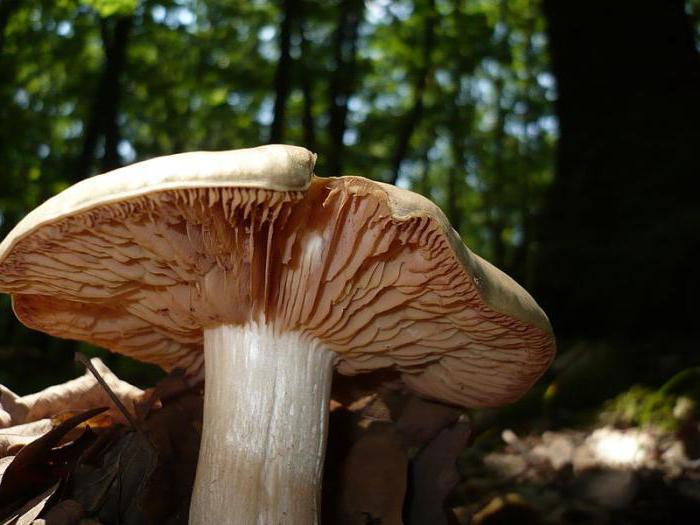
The hospital provides the following assistance for poisoning:
- Washing the stomach with a large amount of warm, slightly salted water in order to remove the remaining toxins from the body, which have not yet had time to be absorbed into the bloodstream or pass from the stomach into the intestines. For this, a large amount of water is drunk, and then vomiting is artificially induced, the procedure is repeated several times.
- The intestines are washed with an enema with rehydron or a small amount of table salt. The procedure is also repeated several times.
- Absorbents are given that neutralize the action of the toxins of the fungus.
- If the diarrhea has not yet begun, then the patient is given a laxative.
- When a large number of poisonous mushrooms are consumed, inflammation of the stomach lining can begin. In this case, the patient is injected intravenously with a mixture of glucose and saline.
- Sometimes a blood transfusion may be required.
It is important to provide a drinking regime with the use of large amounts of mineral water to remove toxins naturally. In addition, after all the manipulations carried out, the person will feel a strong thirst.
In case of poisoning with poisonous entoloma, hospitalization is indicated for 2-4 days, depending on the severity of the condition.
Description
The conditionally edible garden entoloma (Entoloma clypeatum), belonging to the genus Entoloma of the family of entolomaceous, has synonymous names that emphasize its properties, structural features and settlement:
- entoloma edible;
- thyroid rosacea;
- entoloma thyroid;
- entoloma corymbose;
- forest entoloma;
- entoloma thorny;
- podlivnik;
- podabrikosovik;
- podkernik.
The species is characterized by the following distinctive external features:
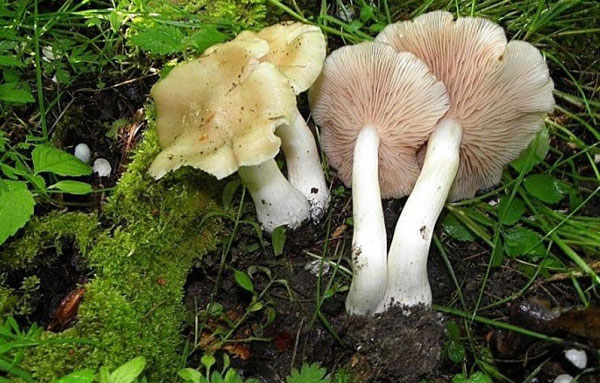
- bell-conical, convex cap becomes prostrate as it develops. The edges are tucked at first, then unevenly. A wide, thickened, smoothed tubercle remains in the center. The color can be pale grayish, as well as brownish-gray and gray-brown.At high humidity, the surface of the cap is sticky, its color becomes more saturated and darker, in dry weather the skin is silky-fibrous, the color brightens. The characteristic diameter is 7-10 cm, sometimes 12 cm;
- rather sparse and wide, adherent toothed plates in young fruiting bodies are painted white, which then quickly turn pink. The edges of the plates are unevenly serrated, the length is uneven;
- light pink spores;
- cylindrical longitudinally ribbed leg light, with a gray or pink tinge, whitish at a slightly widened base and furrowed at the border with the cap. At an early stage of growth, it is solid; in mature fruiting bodies, it is hollow, often curved, sometimes twisted. Its thickness occasionally increases to 4 cm, and on average is 1-2 cm. Length - from 5 to 12 cm;
- soft but dense fibrous flesh is whitish. Has a mild powdery odor and the same taste.
Similar types of mushrooms
There are edible and inedible varieties of mushrooms quite similar to Entoloma clypeatum. Among the edible mushroom species, the pale brown entoloma, or Entoloma sepium, is of particular interest. This mushroom has a creamy, brownish-gray or grayish-brownish-green cap with the presence of emarginate-descending plates and white, with a shiny surface, long-fibered stem type. The edible species Entoloma sepium, which is similar to the creeper, most often grows on the lawn and garden areas, as well as under shrubs from the last decade of May to mid-June.
It is important to note that in addition to the edible species of entoloma, poisonous or tin entoloma grows on the territory of our country. The main, very characteristic feature of the poisonous Entoloma sinuatum is its larger cap.
The average diameter of the cap of an adult mushroom often reaches 18-19 cm. The surface of the cap is off-white, creamy gray, grayish ocher and yellowish. There is a removable skin and yellowish, rather thick plates. The leg is club-shaped, of the same color as the cap. The pulp has a not very pronounced, but weak odor.
In addition, in our country, there can be found not very common, but, nevertheless, highly poisonous species, including entholoma squeezed or Entoloma rhodopolium, which has a thin yellowish-creamy, gray or brownish cap and ammonia aroma. It grows from the last decade of summer to a steady autumn cold snap. The inedible spring entoloma is characterized by a darker coloration of the fruiting body, small size and slender stalk.
Taxonomy, characteristics and description of the structure
According to the systematic nomenclature, Entoloma poisonous belongs to the Entoloma family, the Entoloma genus. Latin name and its synonym: Entoloma sinuatum and Rhodophyllus sinuatus.
This representative is also called:
- Giant rose-colored plate;
- Pink-colored yellowish-gray;
- Entoloma tin;
- Entoloma notched-lamellar.
Hat
The diameter of the cap varies in the range of 5–17 cm, however, representatives with an indicator of 25 cm are often found. Young mushrooms for a long time retain a bell-shaped, in some cases convex shape with tucked edges. With the passage of time and the growth of the mushroom, the cap becomes convex and flat at the ends. In the future, it forms a large tubercle in the center, and its edges become wavy and open. Old mushrooms are characterized by the presence of wrinkles in the middle of the cap. It is smooth to the touch, a little sticky after rain. The color is off-white, yellowish, ashy or brownish-gray.
Hymenophore
The hymenophore is the part of the fungus located under the cap. In entoloma, it is represented by plates. They are very weakly attached to the stem, rarely located. In color, there are both dirty yellow (in most cases in young mushrooms) and pink or even red (in older fruiting bodies). To the edges of the plate are painted in a darker color.
REFERENCE: Most of the representatives of poisonous enthola, which grow in Europe, have no yellow pigment in the hymenophore.
Cut pulp
The pulp is characterized by elasticity and high density, it is white and brownish in color. In the part of the cap, the tone does not change when it breaks. The flesh tastes rancid or has a mealy aroma.
Leg
The fungus is characterized by a central location of the leg, which thickens slightly at the base. It has a cylindrical shape, slightly compressed at the edges. Smooth, silky, dense to the touch. In the part near the cap it has a mealy coating. The leg reaches 10 cm in height, up to 3 cm in width. The color is mainly white, in some cases a gray tint can be traced.
A bit of history
For the first time, they learned about the mushroom in 1788 thanks to the doctor and botanist Pierre Bueyard. A more detailed description was compiled by H.Person (mycologist) at the beginning of the 19th century.
Similar types and differences from them
Garden entoloma is similar to close relatives from the same family:
- conditionally edible pale brown entoloma (Entoloma saepiun) with the same terms of fruiting and places of settlement. These mushrooms are distinguished by a brown cap with a yellowish, brownish and gray tint;
- poisonous tin entoloma or poisonous (Entoloma sinuatum), which has practically the same color and shape. It is all the more necessary to know the distinctive features of a dangerous species that grows in the southern regions of the forest zone, has a much larger size (the maximum diameter of the cap is 20-25 cm), the yellowish color of the plates in young mushrooms and the pulp with a faint smell of rancid flour. The color of the cap does not change at high humidity, the fruit bodies do not form numerous groups. Fortunately, this thermophilic twin is quite rare even in the southern oak forests, and does not grow at all in the northern regions;
- poisonous entoloma pushed through (Entoloma rhodopolium) with a thin cap of brown, tobacco or creamy yellow color and ammonia smell of pulp. Its fruiting bodies appear at a later date, from August to September;
- poisonous spring entoloma (Entoloma vernum) - smaller than the garden one (the diameter of the cap does not exceed 6 cm, the thickness of the leg is up to 1 cm) and dark colored. This species bears fruit especially early - from the end of April to the last days of May.
False doubles
Entoloma has a fairly large number of twins. You can clearly see the differences in the photo.
- The pale brown entoloma is also an edible species. It has a similarity to the garden due to the same color of the legs and cap.
- Collectable entoloma - is distinguished by the presence of shiny scales and the fact that the leg expands towards the base.
Dangerous doubles:
| Entoloma poisonous or tin
|
The main difference is the large cap in comparison with the Podlivnik. Its diameter can reach 2 cm. The skin is easily removable, the plates are yellowish. Has almost no smell. In order to get severe intoxication, it is enough to eat one small piece. The first signs of poisoning appear within half an hour after eating the mushroom. |
| Entoloma squeezed
|
Differs from the garden fruiting period - from August to October. It can also be distinguished by a pungent ammonia odor. |
| Entoloma spring
|
It has a fruiting period different from Podlivnik - from April to May. It also stands out for its darker cap color and smaller size. |
Important! Poisoning can manifest itself in a wide variety of symptoms: long-lasting migraines, dizziness, loss of coordination, nausea and vomiting, diarrhea and flatulence, weakness in the body. If, after eating entoloma, at least one of the listed symptoms is observed, an urgent need to consult a doctor
Smoky talker
It can be distinguished from other similar mushrooms thanks to the characteristic whitish or creamy plates that can be easily removed from the cap. Has a pronounced smell, similar to floral, fruity or mealy, not always pleasant. During cooking, it increases significantly.Mushrooms taste spicy with a sweet or sour aftertaste.
Smoky govorushka mycorrhizates with spruce, oak, birch trees. You can meet on the outskirts of the forest, in gardens, but always next to wet, decaying branches. Grows in groups, rows or circles. Fruiting lasts throughout the fall.


